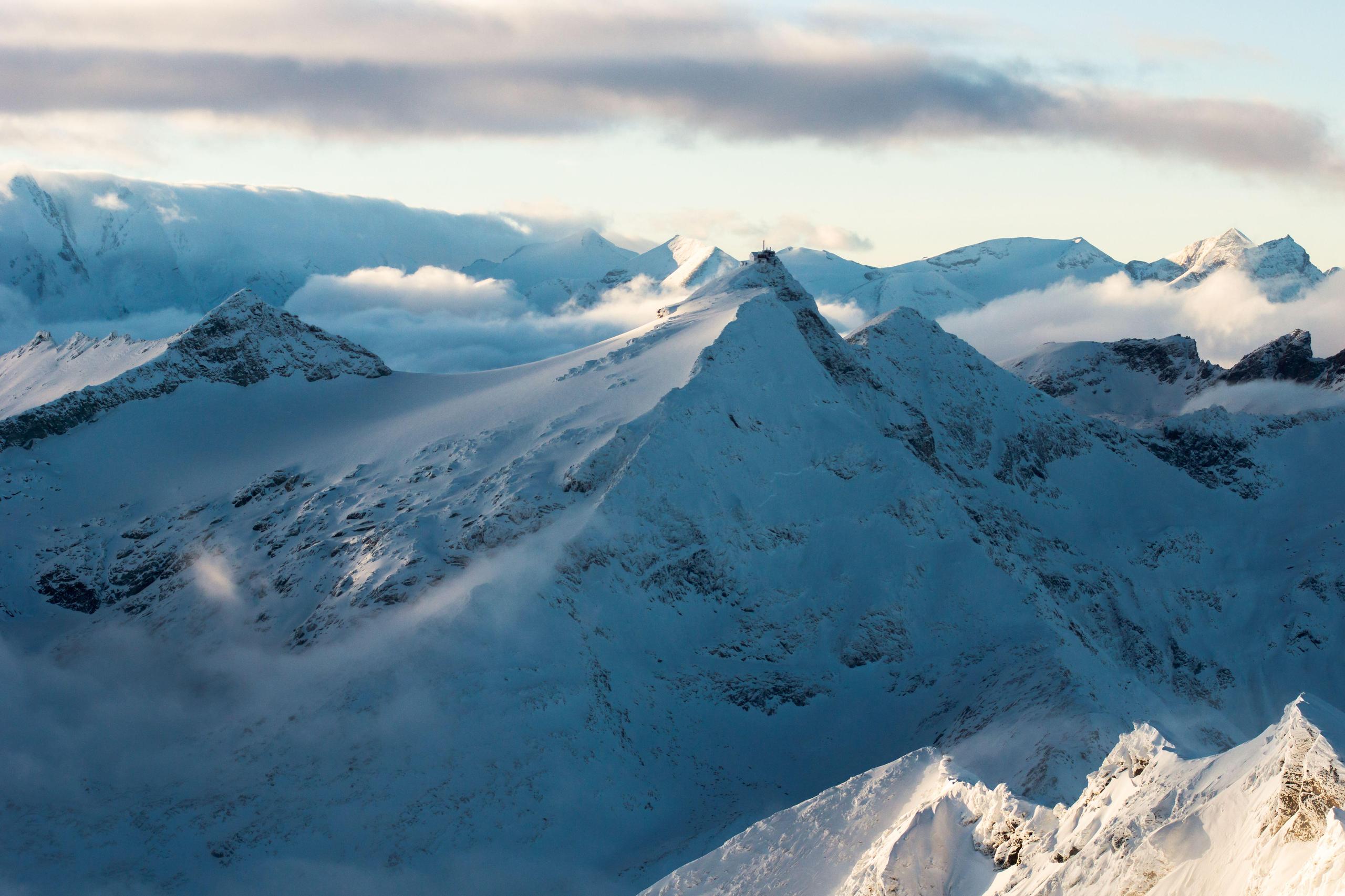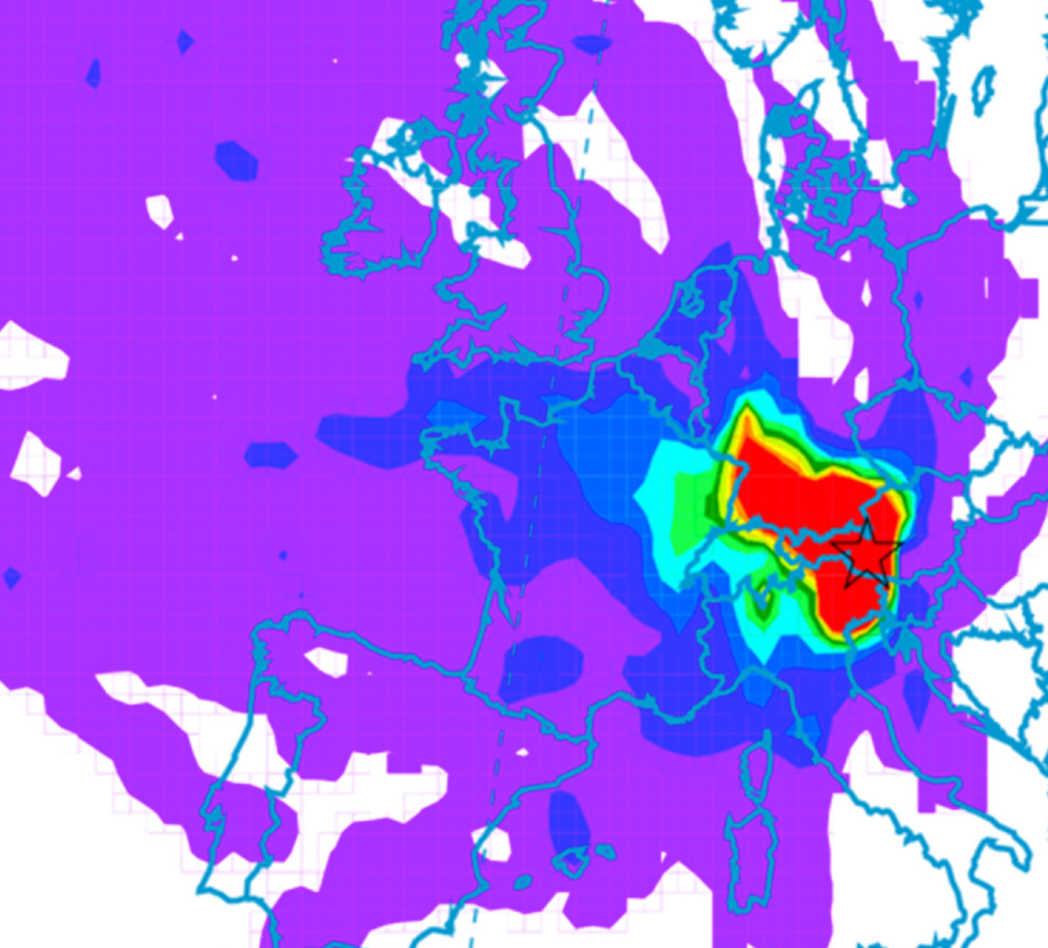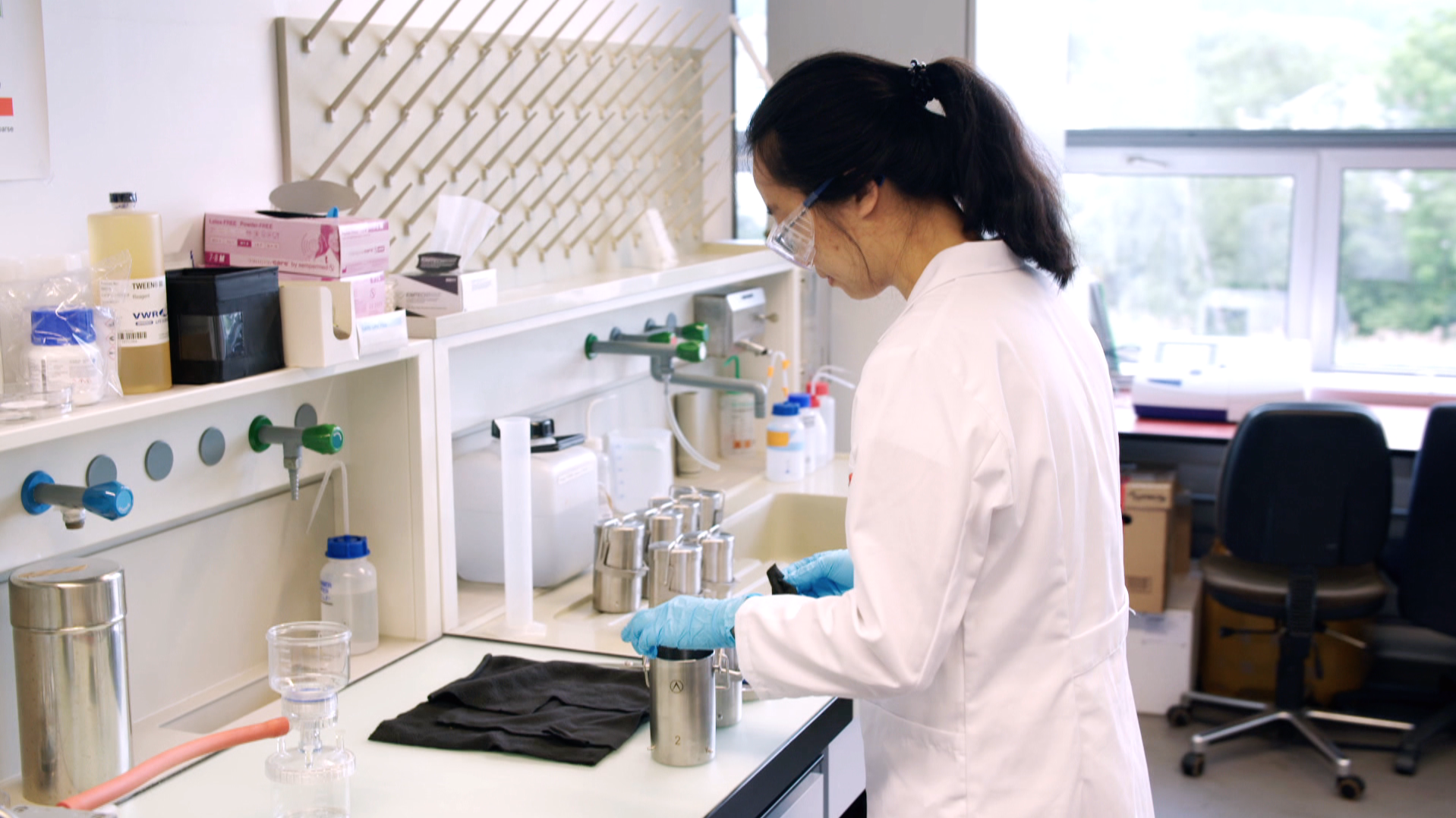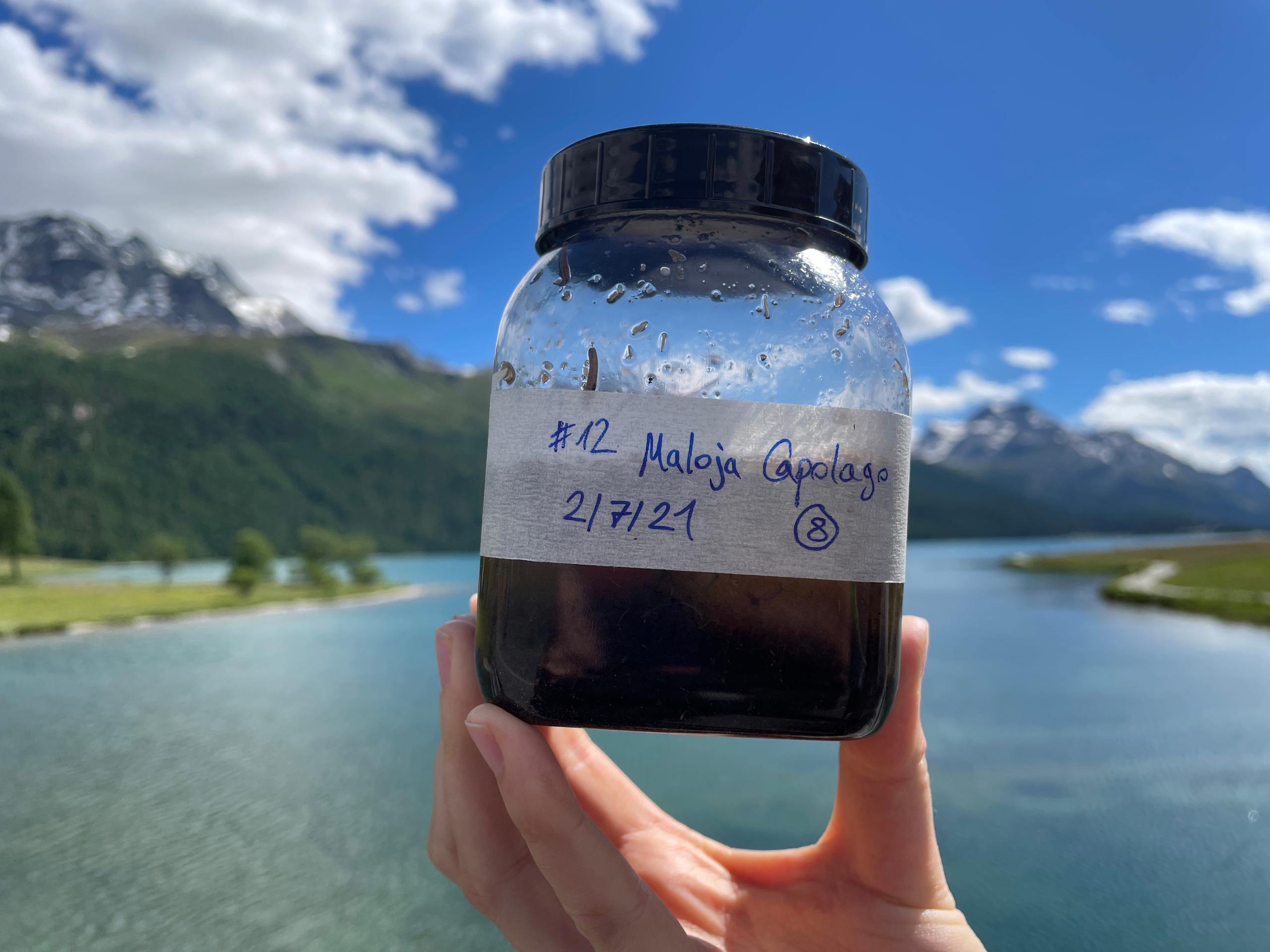
Nanoplastics travel long distances to the Alps

Plastic pollution is almost everywhere: in water, soil, fish stomachs, human waste – even at the top of mountains or in both polar regions. New research suggests that the spread of tiny plastic particles – so-called nanoplastics - is a more widespread problem than previously thought.
Researchers from Switzerland, Austria and the Netherlands estimate that almost 43 trillion tiny plastic particles, as much as 3,000 tonnes, land in Switzerland every yearExternal link.
For their calculations, the scientists collected snow samples near the Sonnblick ObservatoryExternal link, located at 3,106 metres at the top of a mountain in central Austria, to study how nanoplastic spreads.
Using a new chemical method, they were able to precisely calculate the quantities and types of nanoplastic deposited at the remote site. European wind and weather data and advanced modelling techniques were then used to determine the origin of the tiny particles and the routes taken across Europe to the Alps, as well as estimates for neighbouring Switzerland.
The scientists believe that about one-third of the nanoplastic measured on the mountain top originates from a radius of 200 kilometres, mainly from cities nearby. However, tiny fragments of plastic from the world’s oceans also get blown into the air via the spray of the waves. They calculate that around 10% of the particles measured in the study were carried by wind and weather over 2,000 kilometres – some of them from the Atlantic Ocean.

“Most accurate record ever”
The exact deposition rate of nanoplastic at the Sonnblick Observatory was 42kg per square kilometre per year. According to the Swiss Federal Laboratories for Materials Science and Technology (EMPAExternal link), which took part alongside Utrecht University and the Austrian Central Institute for Meteorology and Geophysics in the study published in Environmental Pollution journalExternal link, this represents “the most accurate record of air pollution by nanoplastics ever made”.
“These were quite high concentrations,” EMPA researcher Dominik Brunner told SWI swissinfo.ch. “This really is a global problem that those plastics can be transported over hundreds or thousands of kilometres.”
For their study in the Alps, the scientists collected samples over a month and a half in 2017 from a top layer of snow close to the observatory. A chemical method that determines the contamination of the samples via a mass spectrometer was used for the analysis.
“Our detection method is a bit like a mechanical nose. And unexpectedly, it smelled burning plastics in our snow samples,” said lead researcher Dušan MaterićExternal link from Utrecht University.

More
Plastic pollution happens in the laundry, too
The scientists, who were originally looking for organic particles, were surprised to find nanoplastics such as polypropylene (PP) and polyethylene terephthalate (PET).
Last month a study led by Materić also revealed nanoplastics in ice cores in both polar regions for the first timeExternal link. The researchersExternal link were surprised to find that the pollution stretched back 50 years and a quarter of the particles were from vehicle tyres, as well as polyethylene and PET.
Nanoplastics are thought to be blown to Greenland on winds from cities in North America and Asia. The nanoplastics found in sea ice in McMurdo Sound in Antarctica are likely to have been transported by ocean currents to the remote continent.
A global plastics pollution treaty on the horizon
The growing plastic pollution crisis is a huge concern for scientists, policy-makers and environmental groups.
It is estimated that over 8,300 million tonnes of plastic have been produced worldwide to date, of which 60% is now waste slowly eroding into ever smaller particles. Plastic pollution is set to triple by 2040, the UN Environment Programme (UNEP) has predicted, adding 23-37 million metric tonnes of waste into the world’s oceans each year.
Paints contribute nearly two million tonnes of plastic particles to oceans, lakes and rivers every year. This is greater than the microplastic pollution from textile fibres and tyre dust combined, according to a study published on February 9 by Swiss scientists.
The study by the consultancy Environmental Action (EA)External link shows that nearly 60% of microplastics in the oceans are generated by paints. The authors recommend avoiding the use of paint or reducing the amount applied, where possible, and using biodegradable components. They also stress the importance of waste recovery and recycling.
It is necessary to “better manage the losses generated when sanding or painting in order to prevent them from ending up in the environment”, says researcher Julien Boucher.
The WWF warned in a new reportExternal link last week that almost every species in the oceans has been affected by plastic pollution and that it’s harming important ecosystems such as coral reefs and mangroves.
The environmental group is among more than 700 organisations from 113 countries that have urged the United NationsExternal link to establish an international treaty to address the plastics crisis ahead of a crucial meeting this month.
Negotiators from around the world are due to start discussing a future global treaty to reduce plastic pollution at the hybrid UN Environment Assembly summit in the Kenyan capital Nairobi from February 28-March 2.
While there is reportedly broad agreement that there should be a concerted effort to limit the flow of plastic debris, diplomats are still at the most preliminary phase of deciding what should even be subject to negotiation. Two competing draft resolutionsExternal link are on the table: a proposal covering all plastic pollution put forward by Peru and Rwanda, co-sponsored by 27 countries including Switzerland, and a second weaker resolution by Japan on marine plastic pollution only.

More
Swiss students on the hunt for microplastics in the Alps
More

In compliance with the JTI standards
More: SWI swissinfo.ch certified by the Journalism Trust Initiative





























Join the conversation!